Binding energy per nucleon as function of the nuclear mass
Image courtesy of Contemporary Physics Education Project (CPEP)
Binding Energy
A plot of the binding energy per nucleon vs. atomic mass shows a peak atomic
number 56 (Iron). Elements with atomic mass less then 56 release energy if formed
as a result of a fusion reaction. Above this threshold in order to release energy a
fission reaction must occur.
You might also be interested in:
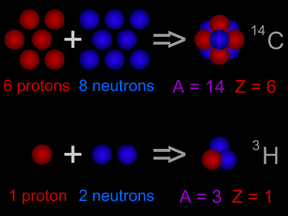
One way scientists measure the size of something is by its mass. Scientists can even measure very, very tiny things like atoms. One measure of the size of an atom is its "atomic mass". Almost all of the
...more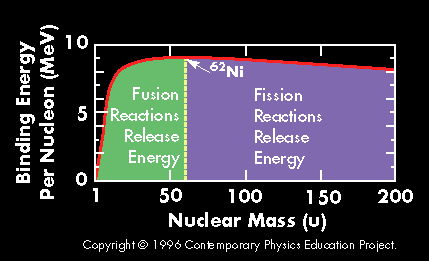
A plot of the binding energy per nucleon vs. atomic mass shows a peak atomic number 56 (Iron). Elements with atomic mass less then 56 release energy if formed as a result of a fusion reaction. Above this
...more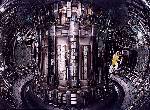
There are several experiments where nuclear fusion reactions have been achieved in a controlled manner (that means no bombs are involved!!). The two main approaches that are being explored are magnetic
...more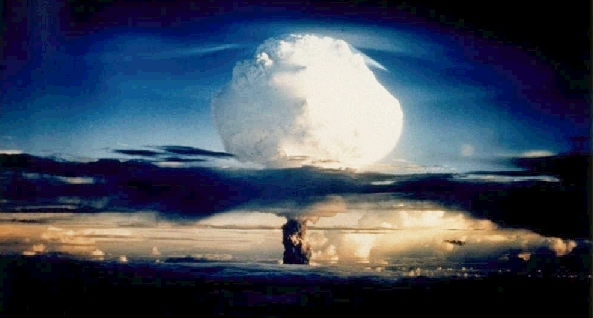
In the Hydrogen bomb the explosion of a nuclear fission charge (atomic bomb) produces the temperature and density so fusion can occur. This fusion results in a sudden release of a large amount of energy
...more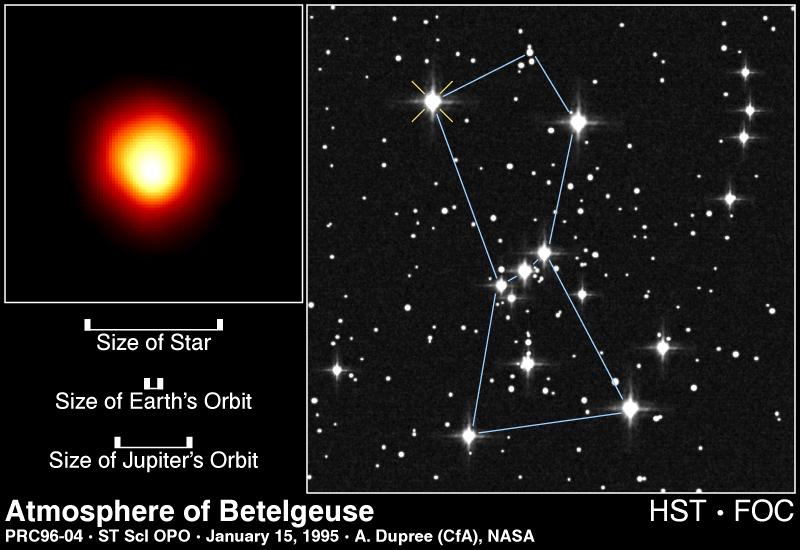
When the temperature in the core of a star reaches 100 million degrees Kelvin fusion of Helium into Carbon occurs. Oxygen is also formed from fusion of Carbon and Helium together when the temperature is
...more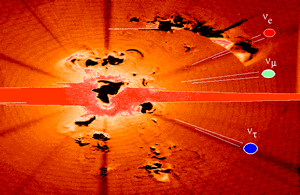
All of the matter and energy in the Universe was initially confined in a very small region. An explosion occurred which caused the Universe to begin expanding. This expansion continues today.
...more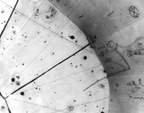
The neutrino is an extremely light particle. It has no electric charge. The neutrino interacts through the weak force. For this reason and because it is electrically neutral, neutrino interactions with
...more














